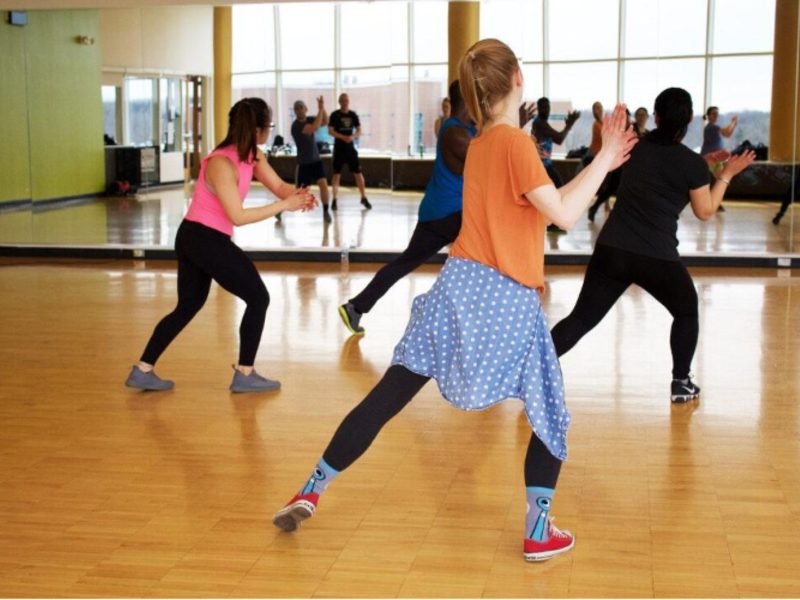Up until a few hundred years ago, it was common for women across the globe to wear the same type of clothing when compared to men. That said, there are still clear differences when comparing the latest fashion between men and women, with modern women requiring designer outfits.
But what did Viking women wear? What made them fashionable during the Viking Age?
We’ll be discussing everything there is to know about Viking women’s clothing, their deep love of pearls, and why they got to wear certain clothing. Here’s everything you need to know about Viking clothing. Read on.
Table of Contents
Apron Dress or Hangerok
Viking women were known for their strength, independence, and bold fashion choices. One of the most iconic pieces of clothing worn by Viking women was the apron dress, also known as the hangerok. This garment was a simple, yet versatile, sleeveless dress that was typically made of woolen fabric and worn over a linen underdress.
The apron dress was secured at the shoulders with brooches and tied at the waist with a belt. It was not only practical for everyday tasks but also adorned with colorful embellishments and intricate embroidery, making it a statement piece for special occasions.
The Hangerok was not only a symbol of the Viking woman’s practicality and strength but also her creativity and sense of style. If you’re going to a costume party and you don’t know what to wear, click for Viking cosplay.
Undergarment or Smock
Undergarments or smocks were an essential part of Viking women’s attire, providing both practicality and fashion. These garments were typically made of linen and were worn under their dresses or tunics. They served as a barrier between their skin and outer clothes.
This protects them from chafing and keeps them warm in the cold Scandinavian climate. Smocks were usually knee-length and were often decorated with intricate patterns. It also showcases women’s craftsmanship and status.
Undergarments may have been a hidden aspect of Viking women’s attire, but they played a crucial role in their daily lives. This is one of the important traditional Viking women’s clothing.
Over the Shoulder Cloak
One of the historically accurate Viking clothing was the over-the-shoulder cloak. This garment was a staple in Viking women’s wardrobes. It provides both warmth and protection from the harsh Nordic climate.
However, what exactly did they wear over their shoulder cloaks? Depending on the occasion, Viking women often accessorize their cloaks with ornate brooches, fur trimmings, and colorful embroidery. These added embellishments added a touch of femininity to the otherwise practical garment.
It also showcased the wealth and status of the wearer. The over-the-shoulder cloak was a functional piece of clothing. It is also a symbol of Viking women’s strength and independence.
Belt Pouches and Embroidery
Belt pouches were small bags that could be attached to a woman’s belt. They were used to hold essentials such as seeds, medicines, and jewelry. These pouches were often beautifully decorated with intricate embroidery.
This showcases the skill and creativity of Viking women. The embroidery on the pouches not only added a touch of decoration but also made the pouches more durable. These practical yet stylish accessories were a staple in Viking women’s attire, showcasing their ingenuity and attention to detail in both fashion and everyday life.
Hairstyles
Viking women were known for their bold and intricate hairstyles that reflected their strong and independent personalities. These women would often braid their hair into elaborate patterns adorned with beads and jewelry. They also incorporated elements of nature, such as flowers and feathers, into their hairstyles.
Viking women were also known for their long, flowing hair, which they took great pride in. Hair was often a way for these women to display their status and wealth. The more elaborate hairstyles are reserved for those of higher social standing.
Fur Usage
Viking women were known for their strong and fierce spirit, which was reflected in their choices of clothing. Fur was an essential element in the wardrobe of Viking women. It’s not just for its practicality but also for its symbolic significance.
Women commonly wore fur as a symbol of wealth and status, often adorning themselves with fur-trimmed garments and accessories. Fur was not only used for its warmth, but it was also prized for its durability and ability to withstand harsh weather conditions.
Viking women also wore fur for ceremonial purposes, such as during important rituals and festivities. Hence, fur usage played a pivotal role in the wardrobe and culture of Viking women, representing strength, status, and tradition.
Footwear
Viking women wore simple, functional footwear made from either leather or animal hides. These shoes were designed to provide protection and warmth in the harsh Scandinavian climate. They were typically ankle-high with a pointed toe and simple lacing or straps to secure them.
In colder regions, fur lining was added for extra insulation. However, for special occasions, Viking women would wear more decorative and ornate shoes with intricate designs and even precious metal embellishments.
These shoes were a symbol of wealth and status. Viking women’s footwear served a practical purpose. It also allowed for personal expression and cultural identity.
Symbolic Jewelry
They adorned themselves with a variety of symbolic jewelry that held deep meaning and significance. These pieces not only added to their beauty but also served as symbols of strength, protection, and status.
Some popular examples include the Valknut, a symbol of Odin’s power, and Thor’s Hammer, which represents Thor’s strength and protection. Viking women also wore necklaces with runic inscriptions.
This reflects their connection to the gods and their beliefs. These symbolic jewelry pieces not only showcased the fashion and style of Viking women but also served as a way to express their beliefs and values.
Knowing What Did Viking Women Wear in the Last Century
In conclusion, Viking women wore a variety of clothing made from natural materials such as wool and linen, adorned with intricate embroidery and jewelry. Despite the limitations placed on them by their society, Viking women took pride in their appearance and used their clothing to express their individuality and strength.
Interested in learning more about the fascinating world of Viking fashion or what did Viking women wear? Join us for a deeper exploration of the styles and customs of these fierce and fashionable women. Don’t miss out on this voyage of discovery!
If you want to read more articles, go to our blog.



